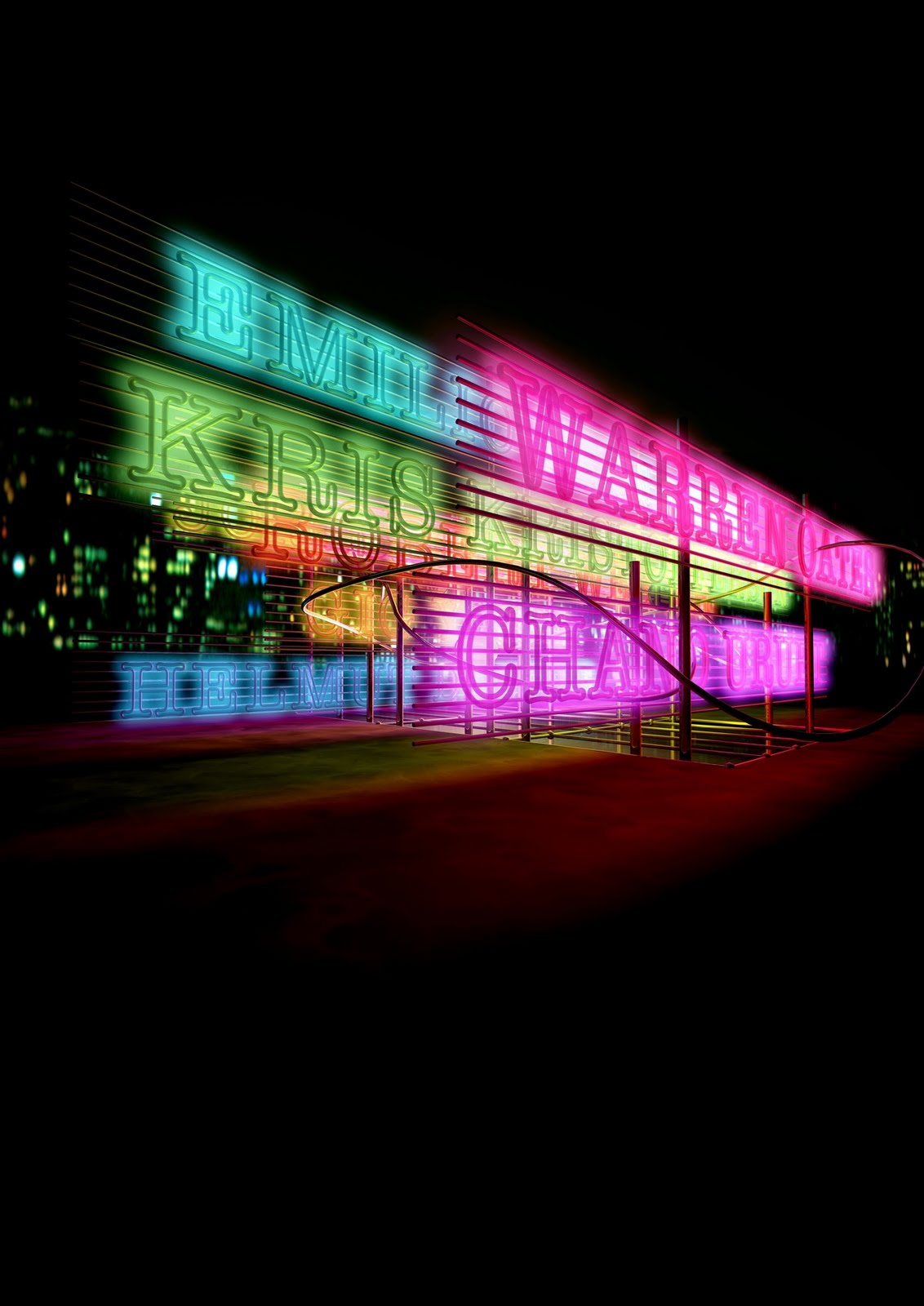Auckland Art Gallery News, November 2005–February 2006.
Jim Speers is our poet of everyday modernism. He revels in the vernacular of corporate signage, strip malls, airports, concrete carparks, and glass-box corporate atriums. Recently, he has been developing ideas for public sculpture, but he’s also interested in the rhetoric of the architectural proposal. He’s been using CAD (computer-assisted drawing) as a design tool, partly because it brings aesthetic features to his proposals that have nothing to do with the works as they would be realised.
Outdoor Cinema presents architectural plans—from basic line elevations to fully rendered 3-D ‘artist’s impressions’—for four imagined outdoor cinemas: an underground one, a circular one, a wedge-shaped one for a hillside, and one elevated on poles. In these odd structures, films would be shown in eccentric ways. For instance, in the Underground Cinema, conceived for the Desert Road (as a neighbour for Waiouru’s bunker-style National Army Museum), Speers would continuously screen Sam Peckinpah’s ultra-violent 1974 road movie Bring Me the Head of Alfredo Garcia.
Preposterously ambitious, Outdoor Cinema recalls monumental heroic American earthworks of the late 196os and 1970s, which were often placed in desert locations. The irony is that these earthworks promoted a direct engagement with the specifics of site, the here and now, while cinema is a means of virtual tourism, offering transport to elsewheres and elsewhens. Outdoor Cinema is an odd mix of the site-specific and the site-irrelevant.
